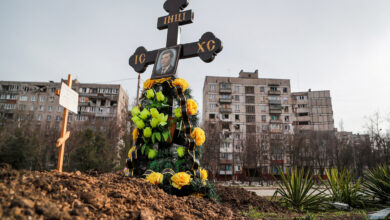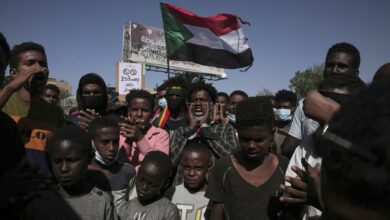It might be hard to imagine the bustling sounds of Cairo’s streets captured in an electronic music track. Can people's voices chitchatting on the street, train and car horns, harmoniously mix with the banging sounds of metal and ceramic workshops and the calls of street sellers, to become the rhythm of a music track?
These are some of the ideas that Al-Faggala Voices music group experimented with in their first album, “Al-Nassabian Orchestra”, released this weekend at the Jesuit Culture Center.
Al-Faggala Voices is the brainchild of the late visual artist and musician Ahmed Basiony, who was martyred on 28 January at Tahrir Square.
Last October, as part of “Al-Faggala Minawara bi Ahlaha” (a colloquial expression meant to praise the neighborhood residents) project initiated by the center, Basiony worked with eight amateur musicians in a workshop setting to document the sounds and thus the life of the Fagalla neighborhood.
Located near the central train station, Faggala is one of the busiest neighborhoods in Cairo. It hosts the country’s biggest paper and printing markets, as well as numerous ceramic and blacksmith workshops.
For four months, Basiony, along with the artists, collected the basic material to begin the project. And after he passed away, his fellow artists at the workshop followed through with it under the guidance of artist Mahmoud Refaat, releasing his dreamed-of album this weekend.
Al-Faggala Voices is not the first group to attempt to reconstruct city sounds through an electro musical theme; this is a rising genre in shaabi (working class) music. It is popularly known as “Mahragan,” meaning festival, and uses the sounds of microbuses and people in the urban landscape to create a mix of rap and electro music tracks.
But “Al-Nassabian Orchestra” remains too faithful to the logic of documentation at the expense of artistic creativity. The album tries to capture the neighborhood’s sound environment with its monotony; sound themes are presented back to back, with limited attempts at weaving them together harmoniously.
Unlike the “Mahragan” shaabi DJs, Al-Faggala Voices care more about technique and documentation than enjoying the music.
Perhaps this is most apparent in the track titled "Al-Fekra al-Thania" (The Second Idea) by Nada El-Shazly. It begins with the voice of a street seller calling out his merchandise, and then the sound of children playing on the street blends in, before it ends with a train’s horn mixed with church bells. Throughout the six-minute track, Shazly uses the sound of blacksmiths knocking on metals as percussion, creating a dystopian and nightmarish experience. The monotonous beats fail to stir the feelings of listeners in any direction beyond noise.
"Al-Hagat Elly Fadlaly" (Things that Remain Mine) by Kareem Fahmy, on the other hand, is more artistic and playful. Fahmy also uses the sounds of children playing on the street, yet a laughing voice seems to tell an old story of one of the neighborhood’s kids, against the sound of an electric guitar.
"Al-Nassabian Orchestra” has an overall mourning mood that seems to be trying to reveal the flourishing Faggala of the old days, before the neighborhood was flooded with Chinese goods, and the local workshops started shutting down because of the competition.




